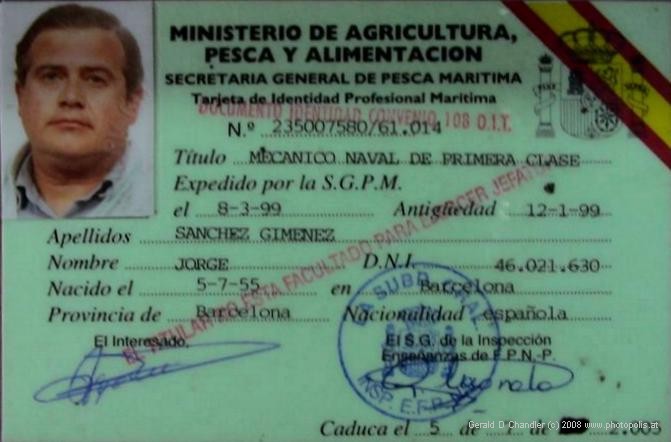Home | Front Page | Index | Blog | New | Contact | Site Map
David
Boquette
Las Lajas
Santiago
Santa Fe
Azuero-Chitre
El Valle
Panama City
Panama Canal
STRI
Porto Belo
San Lorenzo
Colon
Isla Grande
Lady Kis
Foto Show

Route Maps
Belize
Guatemala
Honduras
Nicaragua
Costa Rica
Mexico 2003-04:
2003-04
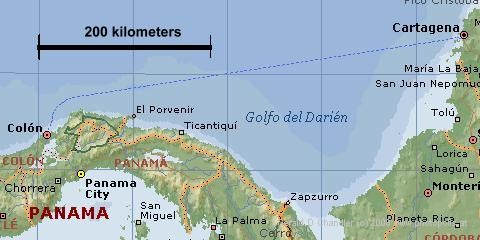
Route of Lady Kis: Colon to Cartagena |
Indecision
Before we ever arrived in Panama we started to consider taking a sailboat from Panama to Colombia. We knew about the possibility from our Lonely Planet "Central America on a Shoestring" Guide. Gerry liked the idea but each time Jan contemplated it, she hoped that we'd never find a place on a sailboat. Jan can experience problems before they arrive while Gerry has to be subject to them to believe in them. In that regard he is like Frederick de Lesseps, the Frenchman who attempted to build the Panama Canal — and failed. De Lesseps always thought he would find a solution to the enormous problems but instead in the end went bankrupt. Jan can easily imagine shipwreck, starvation, piracy, seasickness, boredom, problems living at close quarters with strangers, and a multitude of other things that, like dirt, are invisible to Gerry.
|
Date: 7/24/2004 12:37:19 PM EDT From: pepito jimenez (enduranse@yahoo.es) To: gdchandler@aol.com I loock you adbertaisin in laudry of club nautic I go to cartagena to 30 of julay to 6 augout.end the same time to you you send repor to mi in may email . enduranse@yahoo.es and before to came to club for to loock you plis tel mi what day you came in club nautic good loock. may boat is lady kiss . |
|
Date: 7/27/2004 From: gdchandler@aol.com To: pepito jimenez (enduranse@yahoo.es) Soy des Estados Unidos y mi esposa es de Ingleterra. Todos podemos hablar espanola pero con muchos errores. Yo visitare el Club Nautica de Colon estes Sabado pasado. Podemos visitar usted este jueves, 29 Julio por discutar el voyage. Por Favor mi llamda a mi hotel, Hotel Liboa, Ciudad Panama, tel. 227-5916. Gerry Chandler |
If that wasn't enough there were still other reasons for not taking a sailboat. The main one was that we had our Ford Escort and wanted to drive it all the way to Patagonia. When we finally became convinced that the Darien Gap was for real (i.e., that there was no Panama-Colombia road), that there was no ferry (it had closed a few years back), and that shipping in a container at about $1,000 was more than the car was worth, we narrowed our choices for getting further south to taking a plane, finding a freighter, or finding a sailboat.
Gerry wanted a surface route, i.e. a boat, most likely to Cartagena, but he was open to other destinations. We started our search for one by going to the two closest places mentioned by Lonely Planet: the Voyager Hostel and the Balboa Yacht Club. The first had moved since LP was published but we did find it, and on its bulletin board found three different boats seeking passengers. The bad news was that all three had probably already sailed. Nonetheless we sent them email messages, hoping there would be a second trip. We never got an answer. Our luck at the Balboa Yacht Club was about the same: it had burned down. Nonetheless there was a small place where we could post a message. We never heard anything. But we met an Englishman nearby who told us about a French-built yacht, a Maramu, he had seen in Colon that he thought might be looking for passengers.
Shortly afterwards, and after a month in Panama City on the Pacific side of Panama, we finally made a trip to the Caribbean side. We spent the better part of the day in and around Portobelo and then went to Colon. There with little difficulty we found the Colon Yacht Club — it hadn't burned down. We couldn't find a Maramu or anybody going to Cartagena, so with a prayer (on the part of Gerry) we left a note on the noticeboard, strangely located, we thought, in the laundry rather than in the club house bar.
Opportunity Knocks
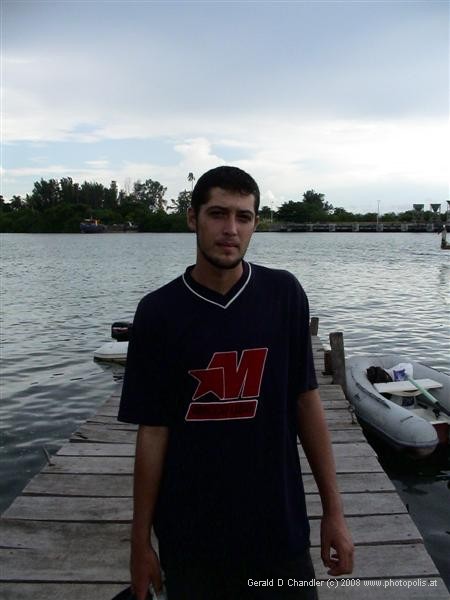
Lionel Rodriguez at our first meeting |
To our great surprise, two days later we got email in halting English, from a Spanish Yahoo email address offering passage on their sailboat Lady Kis (no, that's not a typo — there is only one s). Gerry sent email back saying we'd be in Colon again in two days. We went, we parked our car in the yacht club parking lot and almost the first person we saw was a young Spaniard named Lionel Rodriguez, alias Pepito Jeminez. Lionel had obviously been planning to hang around all day until we showed up, going up to everybody he saw.
Lionel spoke halting English, to match his email style. He explained that he was the junior third of a three-man Spanish crew. The boat indeed was the Lady Kis, a very large boat according to him, and was anchored out in the bay, away from the docks. (Later we learned this was a money saving choice.) The "capitan" was away from the boat that day, so we couldn't board.
We weren't about to commit ourselves without an on-board inspection and anyway couldn't leave as soon as they planned because we had to wind up our affairs in Panama, primarily sell our car and get rid of 1/3 of the junk we had been carrying around in it. Did we want to come back a third time? It was a hundred miles round-trip and a minimum of four hours every time we came to Colon. We decided yes and arranged to meet the captain in another two days.
Wherever possible Gerry struck up a conversation with boat owners. That was easy because yacht owners are a friendly lot. It seems that after being at sea for weeks on end people are happy to have an ear turned their way. Before we left the yacht club he asked about weather conditions, pirates, and other dangers in going to Cartagena. The collective wisdom from two very different boat owners was that it is a comparatively safe journey. Although this is hurricane season, hurricanes start farther north and east and continue on north. It is also the rain and lightning season and these should be no problem. Both people he talked to were anchored near the Lady Kis. One was a woman who had just come in from the West Coast. She felt by looks the boat was very safe. Another had been in the area nearly a year, etc. and made extra money rigging boats. He said that it was obvious that Lady Kis needed repair in that area.
Facts and Worries
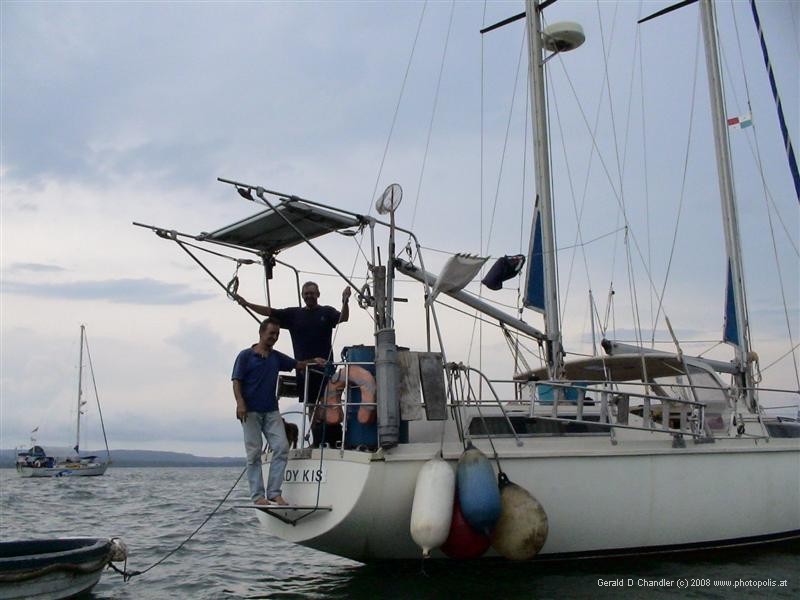
Roberto (l) and Jorge (r) Sanchez Gimenez on the Lady Kis |
We'd set our return meeting for noon. That assured us that we wouldn't have to get up too early and could still make it on time. As we arrived plenty early we made a tour of central Colon and found it more run down but safer than expected.
At the dock Lionel was waiting for us. The Lady Kis was anchored way out on the mud-flats, well away from the club. The boat that took us out was a rickety wooden flat-bottomed boat with an outboard that Jan expected to sink under us at any minute. If that was inauspicous enough, just as we set off, it started to rain.
When we did get to the boat, we met the remaining two crew: Jorge, the captain, and his older brother Roberto that Jan took to calling the Fixer. The brothers Sanchez Gimenez were in their fifties and had bought the Lady Kis seven years ago in Cabo Verde (Cape Verde Islands) where they had been running a charter business. Jorge told us that for many years he was a fisherman on boats based in Spain. Initially he fished for sardines in waters relatively close to Spain. Later, on other boats, he fished for tuna near Mauritius. He produced his captain's license issued by Spanish authorities to confirm this.
Jan looked around the boat and was discouraged. It looked scruffy, untidy, and anything but shipshape. Why was this trio was looking for passengers? Could she entrust her life to them? There would be two other passengers we were told. A young Frenchman and a fifty-something American whose wife would be flying to Cartagena. Maybe there would be safety in numbers.
Gerry was more interested in the technical side. The Lady Kis is 23 years old. It has a built-in lightning rod in its tallest mast. Nothing is unsinkable but the design seems to be robust. There are two inflatable dingys aboard and he inspected one of them, folded in its front-deck compartment. Last year Jorge and Roberto sailed across the Atlantic. This feat, his earlier experience, and his rapport, made Gerry feel it was not a big risk to go with them.
The Lady Kis is a Maramu class boat, built by the Amel company of La Rochelle, France. The company owner and chief designer is H. Amel. (See http://www.amel.fr/ for their newest boat, the Super Maramu.) The Maramu is a 40 ft/12 m boat, about the size of those that sail in the America's Cup Race. With two masts it is considered big among long-distance pleasure boats. We've been on friends' 25 & 32ft boats and it did seem more spacious. It sleeps six:two in an aft cabin,two in a forward cabin, and two in a central cabin which is also the kitchen, dining room, etc.
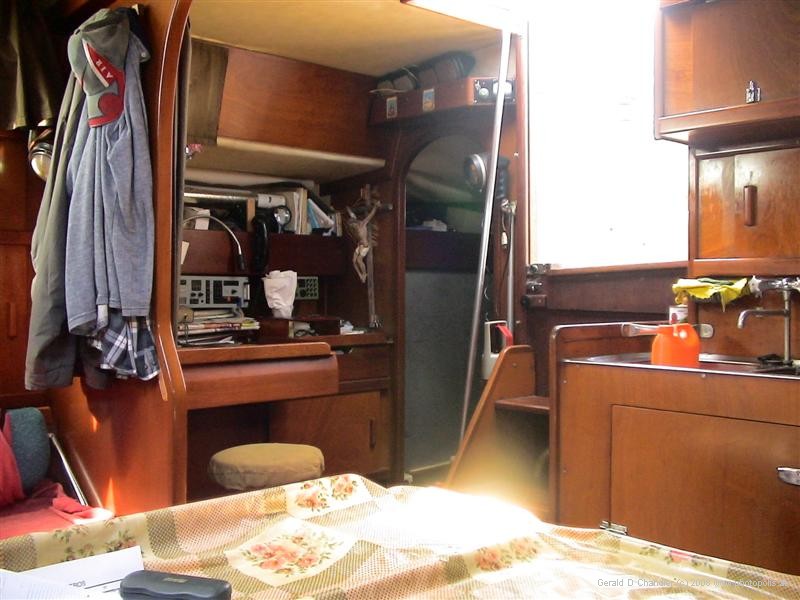
Main cabin with communications equipment, sink, and dining table |
Decision Time
Negotiations were short and simple. Jorge, the better English speaker, told us it would be $200 each, including meals. This is what we expected from LP and compared favorably to $225 airfare. We were told the trip would take four days, including a stop at Isla Verde on the Panama coast. All this seemed reasonable, since the straight-line trip Colon-Cartagena across the Darien Gulf is a bit over 500 km / 300 miles. Boats do 5-15 knots (~ 6-18 mph) depending on winds. So theoretically the time is 60 hours or less of sailing. We were told we'd get the aft cabin and exclusive use of its tiny bath. While small it seemed adequate — better than our most recent tent. We told them we were interested but needed a bit of time to decide. And we explained to them that all depended on our selling the Escort.
When we left and got back to dry land, Jan took one look at Gerry's face and knew the answer. He wanted so very badly to make this trip. We agreed that the "technical risk" was reasonable: the chance of major illness or the boat sinking seemed seemed remote enough. The chance of trickery or friction with the owners seemed greater But he had decided that we could trust these people and the possibility of incompetence also seemed small to Gerry.
Jan asked herself how she could say no and concluded, unhappily, that she couldn't. So the next day, we e-mailed a conditional acceptance, phoning being impossible. We would sail with them as long as we managed to sell the car in time. To our great surprise, selling the Escort proved fairly easy. Two days later we e-mailed that we were on our way, wondering if places were still available for us. If things went as we hoped we would leave Colon on Thursday morning, August 5th and be in Cartagena August 9th.
All Aboard
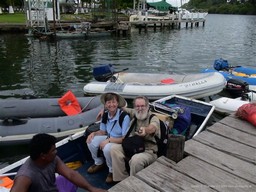
Jan and Gerry in water taxi with luggage going to Lady Kis |
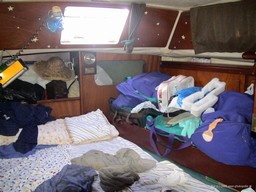
Our cabin with luggage along side
|
Our last morning in Panama City we started to learn what it was going to be like without our own transportation, ready to leave when we wanted. We had to get up very early to meet a bus schedule! That done, after completing the undone bit of packing, we taxied to the bus station and easily caught a comfortable bus for the two hour ride to Colon.
When we arrived in Colon with all our bags we weren't sure whether we were going to find the Lady Kis and her crew. Maybe they would have left without us. We'd had no answer to our last email. So Gerry went off to find an email cafe and see if there was any recent response. In fact, there was none, but as he left the cafe he ran into Jorge and Lionel, coming to send a message. After checking in with Jan, who was watching our bags at the bus station, Jorge and Gerry took our passports to the port authorities to begin exit procedures.
Shortly after that we loaded all of our bags into the same rickety boat and motored out to the Lady Kis, that to Jan's eyes didn't look any more shipshape than on the previous visit. There was some surprise that we were planning to spend the night on board, but since we expected an early departure the next morning it seemed the only thing to do.
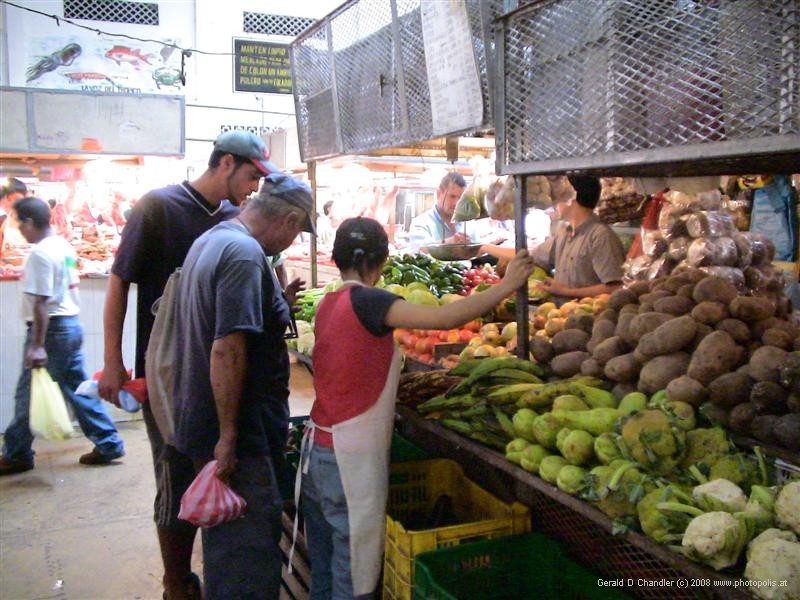
Shopping in Colon Market for 4-day voyage |
Revelations
It was becoming clear that the other passengers were not joining us as Gerry was asked to go shopping for food "so that he could help pick things we liked". Shopping done, Gerry was asked to pay for the food, which he did. This was the first sign of how short of cash they turned out to be.
Meanwhile, back on the boat, Jan was listening to Roberto expound his philosophy and bemoaning the fact that clients these days didn't become friends for life like they used to. Was it a suggestion? a warning? She nodded sagely and asked where we were to put all of our bags. Our bags are many and we had asked not once but several times if they would have enough room for them. Unable to avoid the issue any longer, he took Jan to the aft cabin we were to share and whipping out a board, he slotted it into two holders thus dividing our berth into two sections and announced that the bags would go on one side and us on the other.
When Gerry and Jorge returned and the mountain of food they had bought had been stashed away in various cupboards and underfloor holes, the "true" situation was explained to us. The brothers told us that Jorge had been robbed of $1,300 a month earlier and that they had absolutely no cash. Since we were the only passengers they said that they now had to rely on our generosity to ensure the success of the voyage. We were both very sorry to hear about the robbery, which seemed to be genuine, but Jan didn't like the fact that they had waited until now to reveal their true situation. They had waited until we could not turn back and then used something close to blackmail to ask us for more money. But Gerry really wanted to go and so offered them an extra $50 and paid them the balance immediately, deducting the already spent food money. We ate a friendly meal together that night and went to bed expecting to sail for Cartagena the next morning.
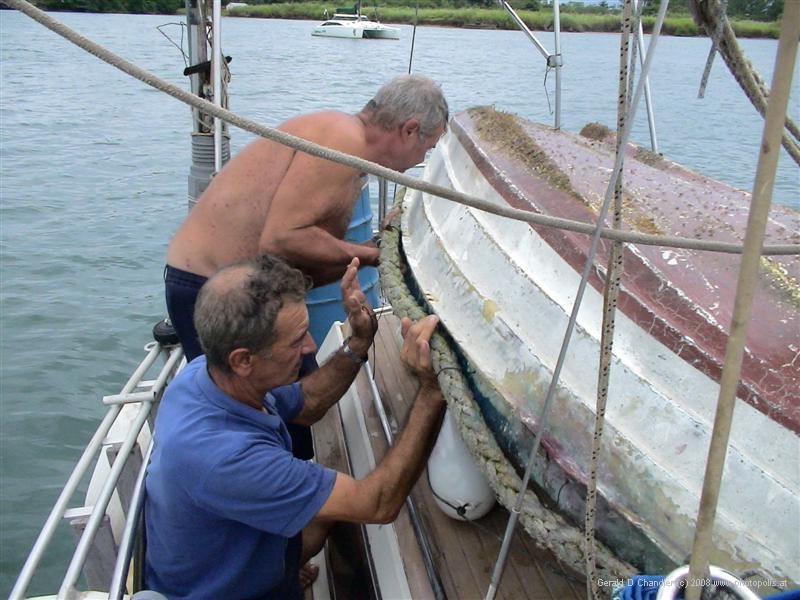
Roberto and Jorge stowing row boat for departureStowing the boat and cleaning the barnacles from its bottom were two of the tasks that we think should have been done the day before. |
Departure
We were to be disappointed. It seemed that very few preparations had been made for departure. The next morning the crew were spending time on preparatory tasks that they could have had done earlier. The coup de grace was a rainstorm that arrived just as preparations seemed to be concluding. We were told the waters would be too rough and our departure was postponed. Later we and our stomachs would have good reason to be happy over this decision.
It was suggested, none too subtly, that perhaps we would like to go ashore. Still feeling some sympathy for their financial straits we agreed and offered to bring back lunch with us, which we did.
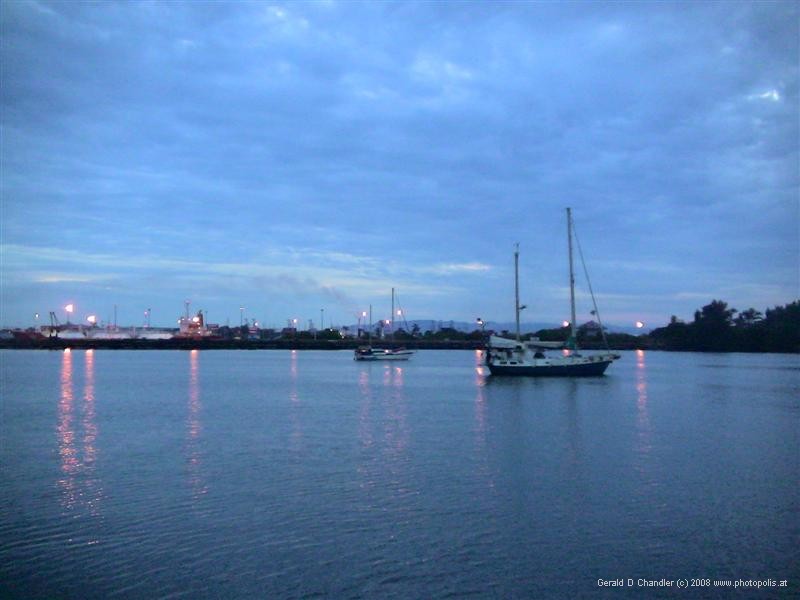
Dawn in Colon Harbor Flats just before departure |
The next day, we did leave on schedule, motoring out of the harbor as expected at about six a.m. But another disappointment was to come when we ended up motoring almost all the way to our first halt in Isla Grande, still in Panamanian waters. When we asked about sailing, they said there wasn't enough wind. Perhaps forced or shamed into it they then tried to let out the sails and couldn't: the Maramu uses winding rather than up-down sails and the un-winding mechanism was stuck. Was the boat capable of sailing? Were they capable of running the boat? Did it have problems we didn't know about? We were too ignorant to know but all was unsettling — and here we were hardly underway.
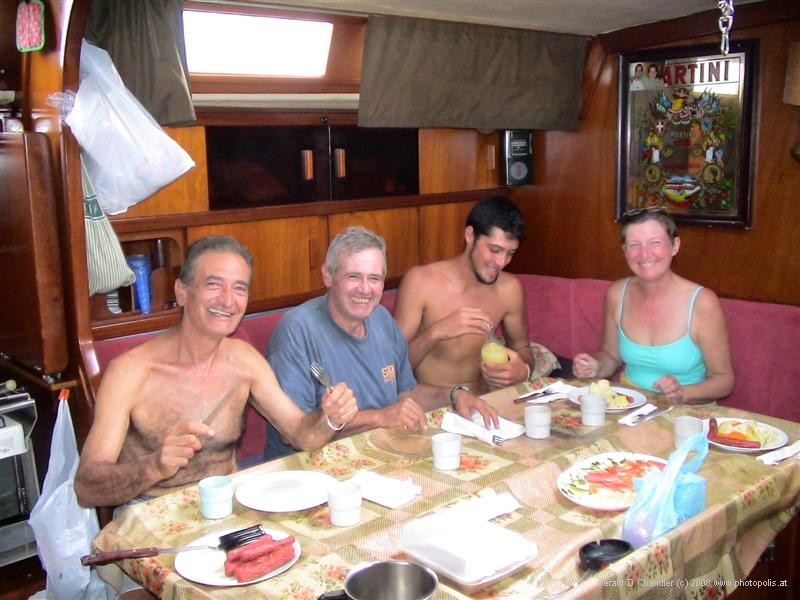
Lunch after swimming in Isla Grande bay - Roberto, Jorge, Lionel, Jan |
Jan had expected to have travel problems and it was no surprise to her that immediately beyond the breakwater where there was not perfect calm she was queasy. She didn't use the Dramamine she had because, to her sorrow, she found the instructions said ashma suffers shouldn't use it. Instead she suffered. Shortly after breakfast, Gerry went one better and, to his great suprise, threw up his breakfast. What a beautiful mango was lost!
That day was happily a short one and we were both very happy to reach the calm waters of Isla Grande. We entered sheltered waters at about 1 p.m and in just a few minutes recovered. After anchoring we all went swimming. It wasn't exactly the turquoise waters we had been expecting, but it seemed clean and it was cool and refreshing. Stomachs fully recovered we enjoyed the following meal.
After lunch there was another surprise. Roberto declared that Gerry and I ought to go ashore and buy more food. Gerry was very reluctant to do this; much food had been bought already. What was missing? The answer seemed to be fresh vegetables. But when we got ashore there were almost no fresh vegetables for sale but still we got another $10 of bits and pieces and then we were expected to pay for the boat to shore and back (the Lady Kis had only a small wooden row-boat).
The next morning, when we were expecting to depart early, almost the first thing we heard is that we have to go ashore again for more food! This time Roberto explained to Gerry that he was afraid we wouldn't have enough food if there was an emergency. Note that each time a new story is used. Now Jan became the reluctant one; Gerry felt in for a dime, in for a dollar. Let's not take risks at this stage; we don't know what they aren't telling us. This time we spent another $20 buying oil, potatoes, frozen meat, canned meat, and so on. Jan just felt squeezed.
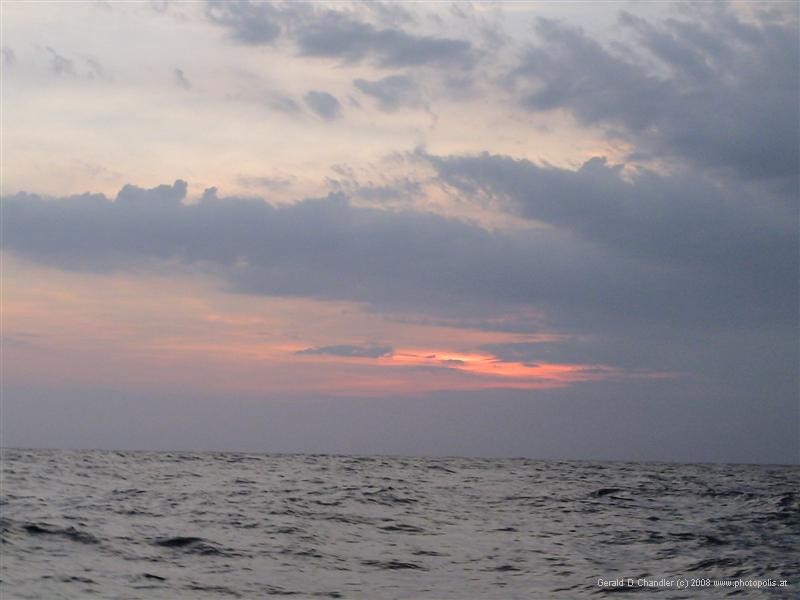
Typical Sea View
|
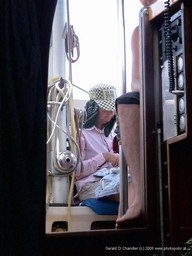
Jan fighting
|

Jorge repairing guy-wire that holds mast |
Voyage By Engine and Sail
On leaving Isla Grande the trip really began. Upon leaving our anchorage and bay we both soon had problems. From that time on it became an endless struggle for Jan to find a semi-comfortable spot. She couldn't read, could hardly eat, and was almost constantly bored with the necessity to look at the horizon. Gerry initially had the same, but milder problems. It was his good fortune that on the last two days he could mostly eat and read at will.
Sea sickness wasn't our only problem. We had expected to sail all the way and were only mildly disappointed when we made the segment Colon to Isla Grande under engine. We understood that they wanted an early, sure arrival. But the next four days were almost entirely by engine. Since our cabin was closest to the engine and its noise our sleep was ruined. And, of course, Gerry's sailing lessons never materialzed: we began to think they are what are called lazy sailors: set a course and never adjust equipment.
There were a few things that didn't make it all negative. We'd usually sit on the prow at sunset, no longer afraid of the falling sun's rays, and look for the first stars. We were pleased when we (Jan) recognized the Big Dipper in an unfamiliar place on the horizon. We never found the Southern Cross, though we suspect it was visible. One day at late dusk a sea bird came by and tried to land on the ship. Its attempt failed and it circled the boat. Again it failed and circled the boat. Would it so tire itself that it would fall in the water and not drown? No. With the last light we saw this black bird perch on the highest, black portion of the central mast.
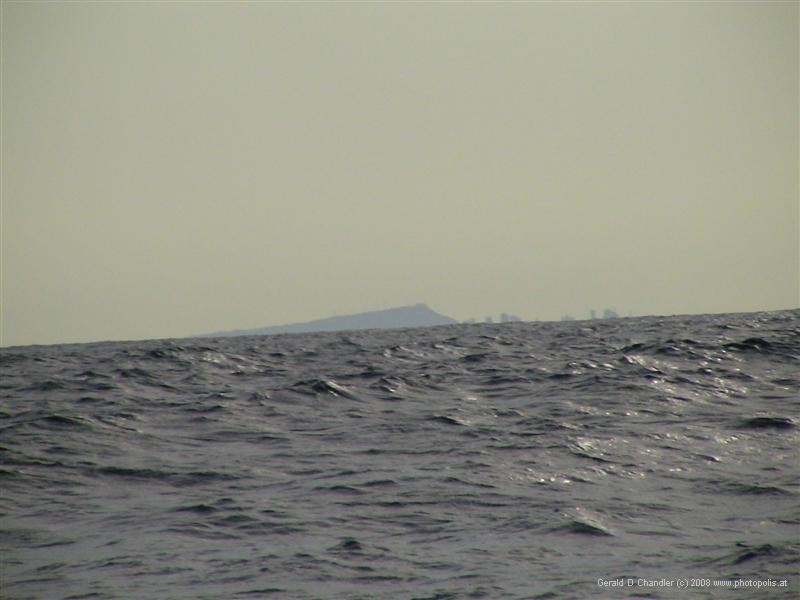
First picture of land — Cartagena — August 10, 7:42 a.m. |
By the last day (see below) owners and passengers were unhappy with each other. Gerry retreated to our cabin and spent the whole morning reading in bed. A cry, not quite "Land Ho" brought him on deck. Cartagena was in sight. At our 3 mph it was another two hours before we got to Bocachica, the entry into the harbor. And then it was another two hours sailing up the inner bay to our anchorage. Gerry watched with interest and dispassion. Jan watched with sure knowledge that an ordeal was at its end.
Jan's Bottom Line
The following is written entirely by Jan in the first person whereas the above is a joint effort.As noted above, food and its hidden costs annoyed us. If they had not snuck things up on us and had told us in the beginning that they wanted an extra $50 each, we would have said yes. Instead, I think they hoped to get us to voluntarily give more and then when we gave less, they were in a fix and this was the only way they could think of to get more out of us. So dishonest.
But food wasn't the only point of contention. When we had toured the boat the first day, Roberto had proudly showed us the aft cabin where we would sleep with its en-suite bathroom. He demonstrated all the conveniences to us, including the shower. Once on board, we took one shower each daily before going to bed to wash the stickiness and the salt from our bodies so that we could sleep. We are very parsimonious people and didn't abuse the privilege. Besides, Jorge had shown Gerry the gauge for the 1,000 liter water tank which showed how much water was being used and Gerry monitored it daily and saw that we were using about 150 liters a day for everything and that gave us sufficient margin for our four-day crossing.
There was no real discussion about water. Roberto mentioned on our second day that we had to be careful, and we both agreed with him and reduced the length of our showers accordingly. I called them 20-second showers. Ten seconds to wet the body. Soap down. Ten seconds to rinse. So you can imagine my surprise to get up the last day but one and try to wash my hands after going to the toilet and find no water. I went up on deck to find Jorge and Roberto in some sort of discussion and waited until they had finished and then asked if they knew that there was no water in the aft bathroom. The response was very agressive and accusatory. "No more showers. Water is precious. Water is only for eating, drinking, and the engine! This is not a hotel! Do you understand." I started to argue but thought better of it. My Spanish wasn't good enough to have a knock-down drag-out fight and this change of attitude worried me. Roberto was the guy who bemoaned the loss of "buena relaciones" between him and his customers. Why was he coming on so strong? As the day wore on, it became a little clearer. The key item was the motor. There must have been some kind of leak and they were adding water hourly. The whole problem of course was lack of communication. Had they explained to us that there was a problem with the motor and that they were worried, we would not have objected. Instead they confronted us with a fait accompli and no explanation.
The final bone of contention was extremely petty. On our first visit, Jorge had explained to Gerry the safety features of the boat, including sonar and GPS. Once we left Colon, the GPS was always turned on and set down near the wheel. Gerry got into the habit of logging the reading once every couple of hours or so, asking whoever was at the wheel to read it out to him. Not a great burden you would think. Even when sailing, they hardly ever changed the sails, to the point we wondered if they really knew how to sail. Gerry wanted to be able to plot our course after the trip using our Encarta. As time went on, all but the youngest member of crew, Lionel, became irritated at being asked to read out the position. Finally on the last morning, they rather rudely refused to do so.
The friction made the journey unpleasant on the whole. We got to spend most of only one day under sail, not enough to really get a feel for what sailing is all about. Sleeping in our cabin was almost impossible because of the motion of the boat combined with the noise and vibration of the motor. On the whole the trip was torture for me and not too pleasant for Gerry. For me, who suffered constantly from seasickness, it was total boredom being unable to do anything but stare at the horizon or be flat on my back for fear of nausea. [We had bought some dramamine, but the notes said it wasn't recommended for asthma sufferers, so I thought it prudent not to take any.] For Gerry, so full of enthusiasm to watch and learn how real sailors do things, the crew went from morose and unhelpful to downright rude as time went along. The one positive thing we can say about the crew of the Lady Kis is that they did bring us safely to Cartagena. But the trip was not enjoyable and these clients certainly won't be their lifelong friends.
